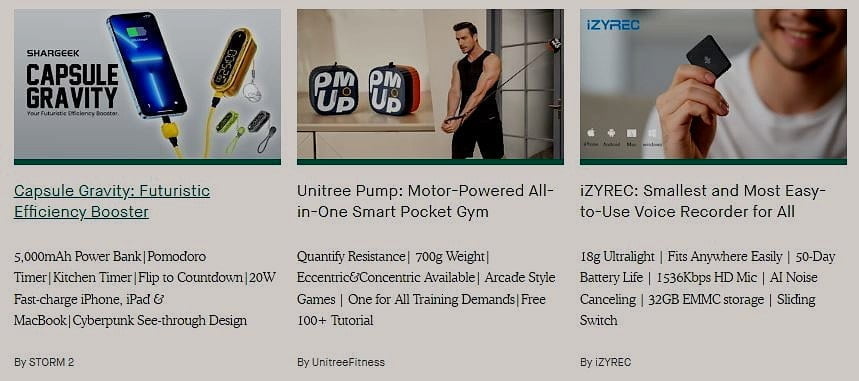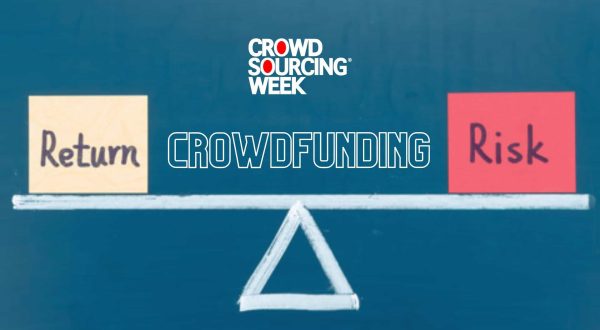The higher the returns anyone wants from making an investment, the more uncertainty (or risk) they need to expose their money to. This is certainly true in crowdfunding. This article looks at the risks and returns involved in reward, debt and equity crowdfunding, with some examples and a little personal experience.
Debt crowdfunding platforms, also known as peer-to-peer lenders, generally experience an average default rate of 1 to 10%. Equity crowdfunding mainly, though not exclusively, involves backing startup businesses. On average, 50% of them fail in their first three years, and only 1 in 10 succeeds beyond ten years. Investors seek higher returns from buying equity than from providing capital for loans.
Reward-based crowdfunding, which does not involve buying equity in or lending to a startup, carries its own risks. It swiftly developed from rewarding backers with a gesture of appreciation for a donation to a project or an appeal. In many instances it has become a quasi-sales channel where the donation is effectively the purchase price of a product, and the product happens to be the reward that is provided. Even though this may sound a straightforward transactional arrangement, it can carry risks if the product on offer is still at a development stage. It is definitely not the same in timescale or consumer protection as ordering an item from Amazon.
Reward-based crowdfunding risks and returns
A major benefit of reward-based crowdfunding is that product creators can check consumer demand before committing to make any products. For them it certainly de-risks the process.
“All or Nothing” projects set a minimum order level that has to be reached to trigger providing the items. A project that falls short of target doesn’t have to go ahead, and payments are returned. Conversely, careful price-setting means that if production does go ahead then there’s already enough money to pay for it.
This makes it sound risk-free for people ordering an item, but complications can arise when a product is still being developed. This means people pre-order (and pay for) a product that does not actually exist. It can be difficult for project leaders to say “enough” when pre-orders continue to arrive. Supply chains and manufacturers may not be able to meet demand, or early product deliveries may not be up to standard.
As an example, a fold-up electric scooter was too small and difficult to ride, and some just broke too easily. A redesign and factory re-tooling were unplanned costs and months later an adequate product still did not exist. When the company was almost bankrupt some disappointed backers claimed it had been deliberate fraud.
When considering the risks and returns of crowdfunding, backers must remember a pre-order is not the same as buying through Amazon or other online retailers.

Additional crowdfunding returns for product backers, beyond receiving the products they ordered, do exist, though are intangible. Early-adopters gain prestige through access to leading-edge products, discounts against roll-out retail prices, and may get to network with the product creators.
Peer-to-peer lending/debt crowdfunding risks and returns
P2P lenders source retail investors’ money and lend it to business customers. Investors earn better returns than using traditional B2C financial service providers, and borrowers get loans at interest rates lower than traditional lenders. It’s quicker because lenders use online technology, and cheaper because they don’t maintain branch offices or employee pension schemes. Automated decision-making assesses more data sources than traditional lenders, which expands the customer base.
Registered lenders check opportunities available on each P2P lending platform, and choose who to lend to based on the different repayment terms available. It is easy and speedy, often requires no more than self-completion registration, and small scale investors get the same terms as professional ones.
The main risk for retail investors is that a borrower may not be able to meet the repayment obligations. The average default rate is regularly quoted as 1% to 10%. Loans should be spread across several borrowers, and income projections should allow for some default.
Covid disrupted the market in 2019. Many business borrowers failed to meet loan repayments. Retail investors demanded that platforms give them their money back, but either it was tied up until fixed date repayments or had simply been used up by a failing business. Some platforms collapsed, including Lendy and House Crowd in the UK.
Many other platforms tightened their criteria for new loans, and their default rates actually fell dramatically in 2020. Several reported zero losses on loans made since the start of the pandemic. The UK property loan platform Kuflink had a 2020 default rate of 0.4% – down from 22.6% in 2019. Right now it is offering annual gross returns of up to 7.44%.
Despite (or perhaps because of?) double-digit inflation around the world and spiralling energy costs that have ripped holes through many business plans, P2P lending is looking positive.
- In September 2022 the UK’s Peer To Peer Finance News reported European P2P lending investments had returned an average of 12% in the year to date, making them the fourth most profitable investment class of 2022.
- Alternative finance through both peer-to-peer lending and equity crowdfunding is growing fast in countries like Malaysia, due to higher levels of personal connectivity, public confidence in better regulatory controls, and Government involvement which means retail investors can back micro, small and medium size businesses alongside the Malaysia Co-Investment Fund (MyCIF). In 2021 the funds raised in Malaysia’s P2P market increased by 122%, according to the country’s Securities Commission. Half of the 20,531 retail investors were aged below 35.
- 63% of the total crowdfunding market growth from 2021 to 2026 is forecast to originate from Asia-Pacific (APAC).
Equity crowdfunding risks and rewards
1 in 10 startups eventually fail within 10 years. US equity crowdfunding platform WeFunder puts it very starkly: “Startups win big or go bankrupt. Consider investing in them more like socially-good lottery tickets.”
We believe there is more to it than that, and there are certainly a number of factors that impact on decisions to invest in equity in any privately-owned businesses. They include:
- Different types of shares. Not all shareholders may be eligible to vote, will that matter to you? Which shareholders have preference in the event of possibly going in to administration?
- Convertible loans are investments made through loans to the business which are converted to equity at a discounted rate at a later date. Until such time as there is a share price and the possibility of trading n a secondary market, the investment is totally illiquid.
- The likely time it will take to deliver a return to investors through an IPO or acquisition. Do you want to wait that long? What else could you do with the money in the meantime? Does the platform have a secondary market?
- Dividends are not usually payable as investors want to see as much profit as possible re-invested in the business. Though if there are going to be any, they will impact on the overall return delivered.
- Are other financial benefits available? In the UK, for example, the government taxation service offers investors a refund on the value of investments made in eligible companies through reducing their income tax payable on earnings. Further refunds are available for any investment in a company that goes out of business. On a more positive note, returns from successful investments can be sheltered from Capital Gains Tax.
- Equity investors may enjoy product discounts or invitations to exclusive events.
Different investors may prioritise any of these factors differently. Given the variety of possible circumstances, principally the time taken for investors to receive a return, it is difficult to compare returns on a like-for-like basis. Though given that only 1 in 10 startups survive beyond 10 years it is certainly reassuring if any returns are a big-win of at least 10x to offset the inherent equity crowdfunding risks.
For an investment sector that relies on the support of a pipeline of retail investors, it is strange that platforms are so reluctant to share details of success rates. One exception is the UK platform Crowdcube. In total, they are able to say that 14% of the companies that used them to raise funds have ceased trading, and 6% have exited and paid a return to their investors. 80% remain somewhere in between, and who knows how many will remain so indefinitely? The exits include the following.
| Company | Sector | % ROI |
| Camden Town Brewery | Craft beer brewery | 200 |
| Candidate ID | Recruitment software | 217 |
| Contract Pod (New Galaxy) | Digitisation of legal contracts | 3,000 |
| E-car Club | Electric car-sharing club | 300 |
| Feedr | Marketplace connecting offices with artisan eateries | 200 |
| Intelligence Fusion | SaaS threat intelligence company | Undisclosed |
| Mindful Chef | Health food delivery service | 350 |
| Nutmeg | Fintech, acquired by JP Morgan Chase | 230 |
| Pod Point | Building electric vehicle charging infrastructure | Undisclosed |
| Revolut | Fintech, a challenger bank | 1,900 |
| The Sports Edit | Curated sportswear | Undisclosed |
| ZigZag Global | Returned goods management platform | 3,800 |
Crowdcube’s U.S. partner SeedInvest has also revealed some exit data.
- Heliogen: Raised $1.6 million on SeedInvest in 2017 as part of a Seed Round at a $20 million pre-money valuation. In 2021, Heliogen went public at a $2 billion valuation. That is 100x!
- Knighscope: This company raised capital multiple times on SeedInvest. An IPO on the Nasdaq in 2022, generated 133% to 155% return for investors.
- Trust Stamp: More than 2,700 investors backed this company with $6.5 million. It delivered a 190% return.
- Shelf.io: This company raised $475,000 trough crowdfunding in 2016. A Series B round provided those early investors with an approximate return of 195%.
- PetDesk: Crowdfunding investors in 2016 went on to earn around a 175% return.
Several major platforms have, or may be in the process of establishing, secondary markets. These give investors regular opportunities to sell their equity before an IPO or an acquisition. Shares can often be sold only to other existing investors who would have had access to the same company information to make a previous decision on buying or not.
Crowdfunding non-equity investments
There is a growing range of access points for retail investors to invest in luxury goods.
Konvi is a European crowdfunding platform for people to invest through shared ownership of luxury items like watches, art and fine wines. For every asset that is going to be funded a holding company is created. This holding company’s purpose is to own, manage, and sell one particular asset. When a person invests in an asset, they become a shareholder in this holding company.

The Masterworks platform makes it possible for anyone to invest in blue-chip art, with works by artists like Banksy. From 1995 to 2020, contemporary art prices outpaced S&P 500 returns by 174%, and it is part of an estimated $1.7 trillion asset class that is expected to grow 58% in just 5 years, according to Deloitte.
US platform StartEngine is offering shares in fine wines from Bordeaux, in France. According to Wine Guardian, wine as an investment is a stable investment that has earned investors a solid 13.6% annualized return over the past 15 years.
Some personal experience
In seven years of equity crowdfunding, my one return so far has been from a modest property development scheme. It paid a gross return of 28% after two years.
Some of my business investments have ceased trading. It may seem an obvious risk now, but the “healthy fast-food noodle brand” created by a founder suffering from cancer had no succession plan for a new CEO who shared his vision after he died.
 A craft beer brewery had to suspend brewing for a month after a clerical error: nobody had told the UK tax authorities about a change of main trading address. The month’s gap in output lost some trade customers, dented its reputation, hit cashflow and accumulated debt. The business that had been valued at £25 million went into administration and a major global brewer bought it for under £700,000. Shareholders were wiped out, and we also lost our discounts on online purchases!
A craft beer brewery had to suspend brewing for a month after a clerical error: nobody had told the UK tax authorities about a change of main trading address. The month’s gap in output lost some trade customers, dented its reputation, hit cashflow and accumulated debt. The business that had been valued at £25 million went into administration and a major global brewer bought it for under £700,000. Shareholders were wiped out, and we also lost our discounts on online purchases!
Crowdfunding risks include events totally outside a company’s control. UK cryptocurrency trader Ziglu was valued at £85m when I invested in 2021. Five months later a US crypto platform wanted a UK bridgehead and offered to acquire it at a value of £170m. This looked like a positive 2x return in just a few months. However, four months later, after the global revaluation of many tech startups, the acquisition is going ahead at a valuation of £60m. The earliest crowdfunding investors will receive a return, and those of us in the last round will record a loss due to external market forces.






